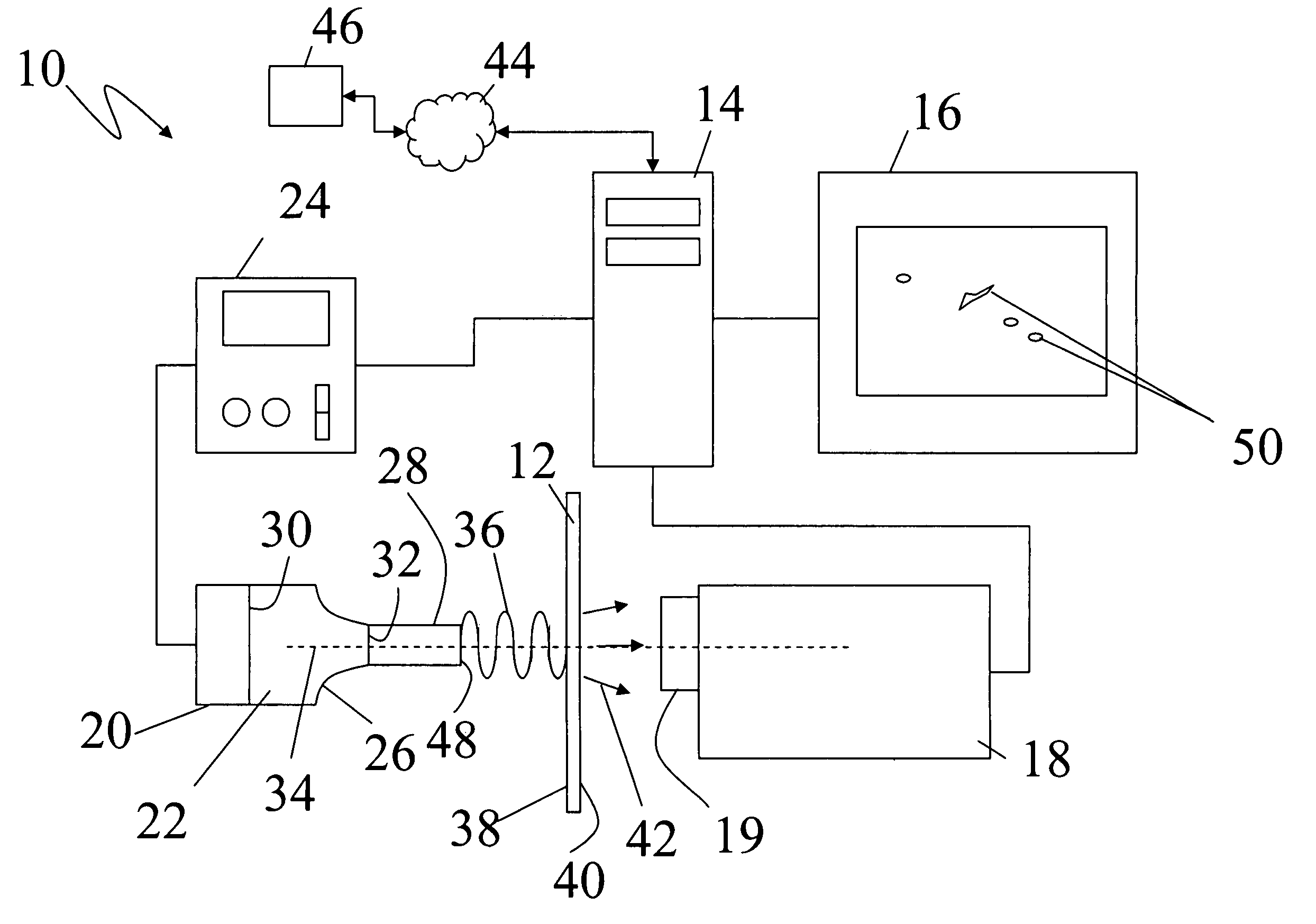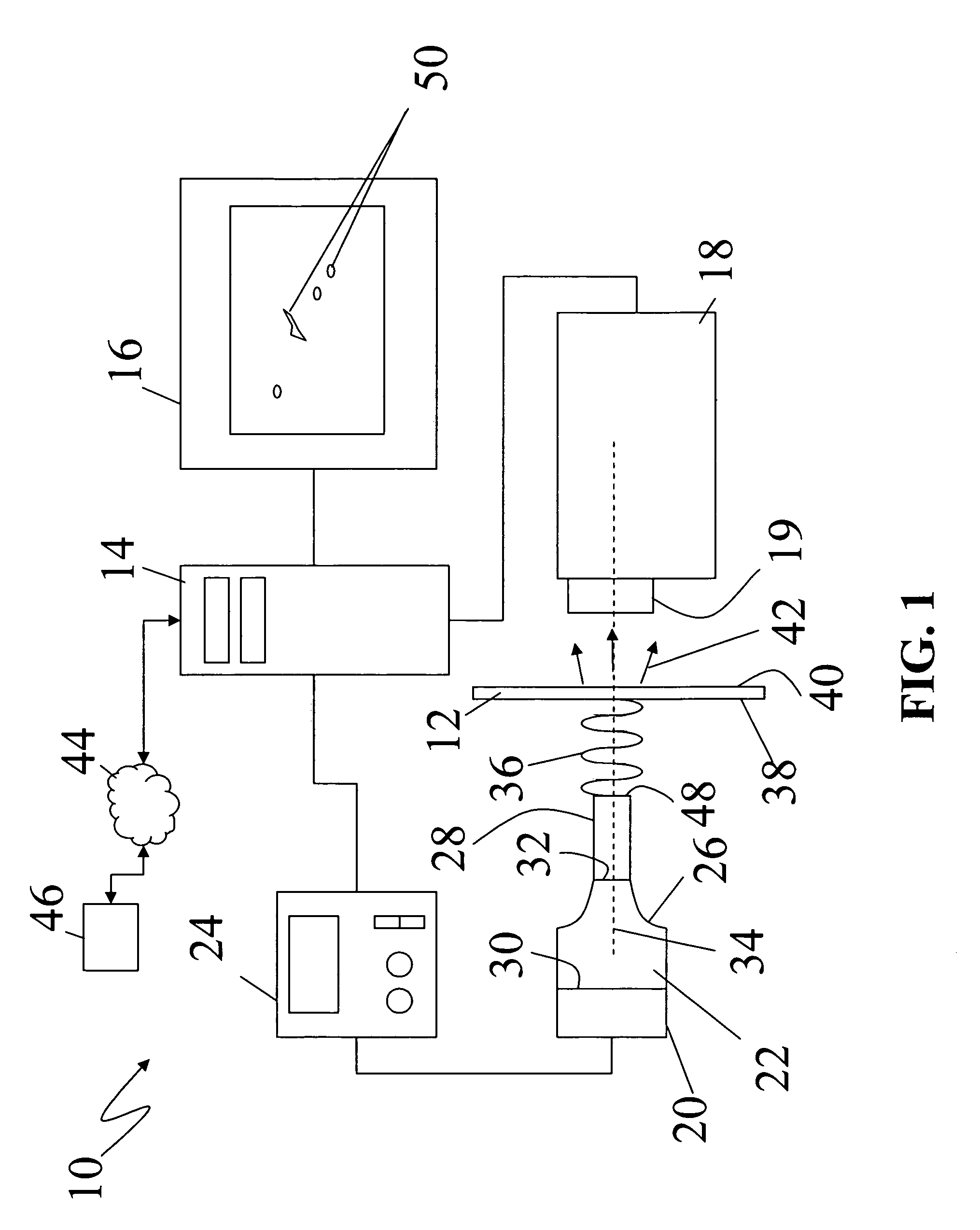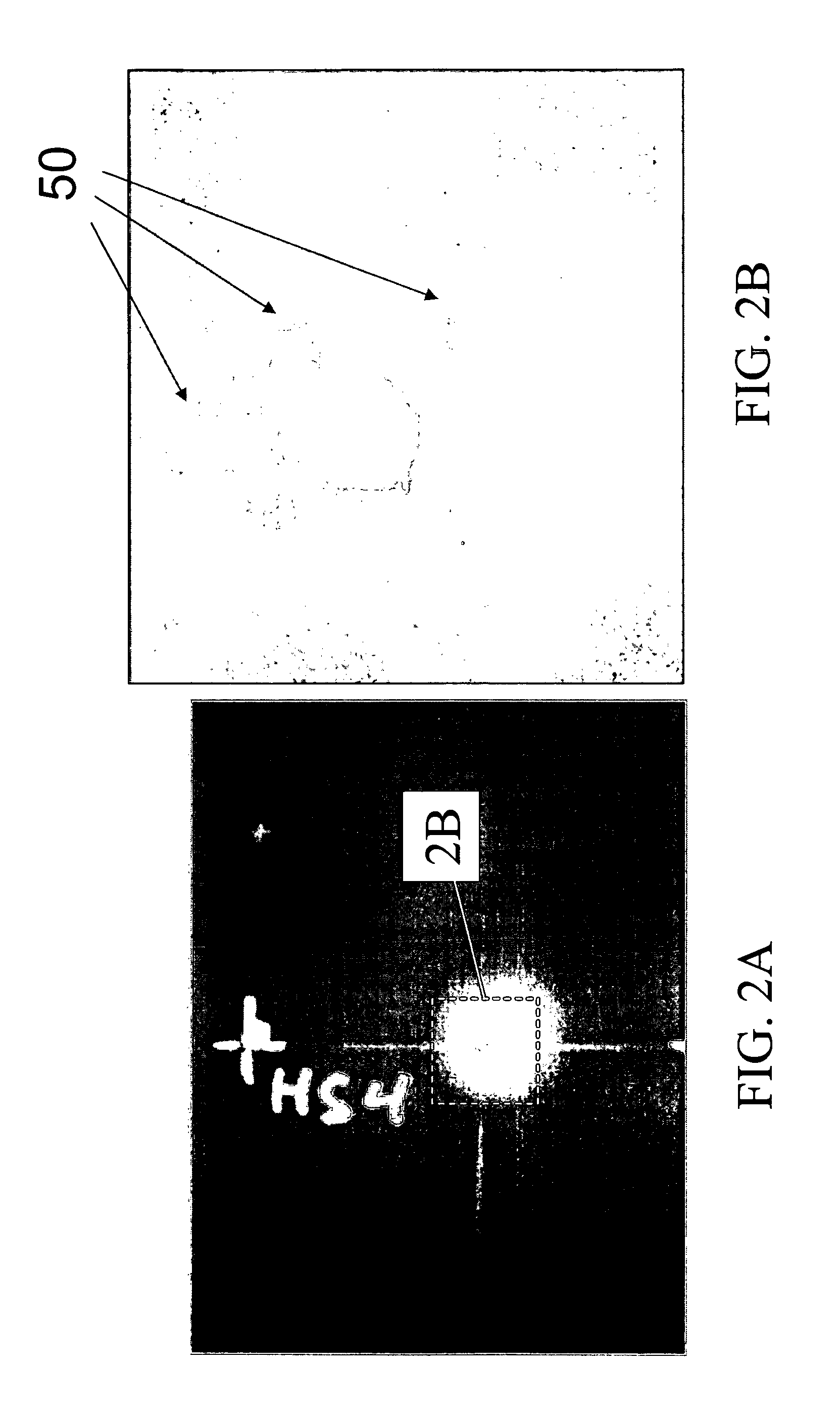Non-contact thermo-elastic property measurement and imaging system for quantitative nondestructive evaluation of materials
a non-contact, thermo-elastic property technology, applied in the direction of instruments, specific gravity measurement, optical radiation measurement, etc., can solve the problems of significant change in the elastic modulus, non-destructive techniques, dramatic deformation of the strength of materials exposed to heat, etc., to increase the energy level of subsequent pulses
- Summary
- Abstract
- Description
- Claims
- Application Information
AI Technical Summary
Benefits of technology
Problems solved by technology
Method used
Image
Examples
Embodiment Construction
[0021]The following description of the embodiments of the invention directed to a non-contact nondestructive evaluation system and method thereof for testing and evaluation of a material based on measuring and imaging heat generation and increase of temperature due to interaction of acoustic waves with the material is merely exemplary in nature, and is in no way intended to limit the invention or its applications or uses.
[0022]The basic principles of the methodology and the block diagram of a non-contact thermo-elastic property measurement and imaging system 10 are shown in FIG. 1, according to an embodiment of the present invention. The system 10 is being used to detect defects, such as cracks, corrosion, delaminations, disbonds, etc., in a specimen 12. The specimen 12 is intended to represent any structural component or material, such as an aircraft skin, turbine blades, structural welds, that may include these types of defects. It is stressed that the specimen 12 does not need to...
PUM
| Property | Measurement | Unit |
|---|---|---|
| frequency | aaaaa | aaaaa |
| frequency | aaaaa | aaaaa |
| diameter | aaaaa | aaaaa |
Abstract
Description
Claims
Application Information
 Login to View More
Login to View More - R&D
- Intellectual Property
- Life Sciences
- Materials
- Tech Scout
- Unparalleled Data Quality
- Higher Quality Content
- 60% Fewer Hallucinations
Browse by: Latest US Patents, China's latest patents, Technical Efficacy Thesaurus, Application Domain, Technology Topic, Popular Technical Reports.
© 2025 PatSnap. All rights reserved.Legal|Privacy policy|Modern Slavery Act Transparency Statement|Sitemap|About US| Contact US: help@patsnap.com



